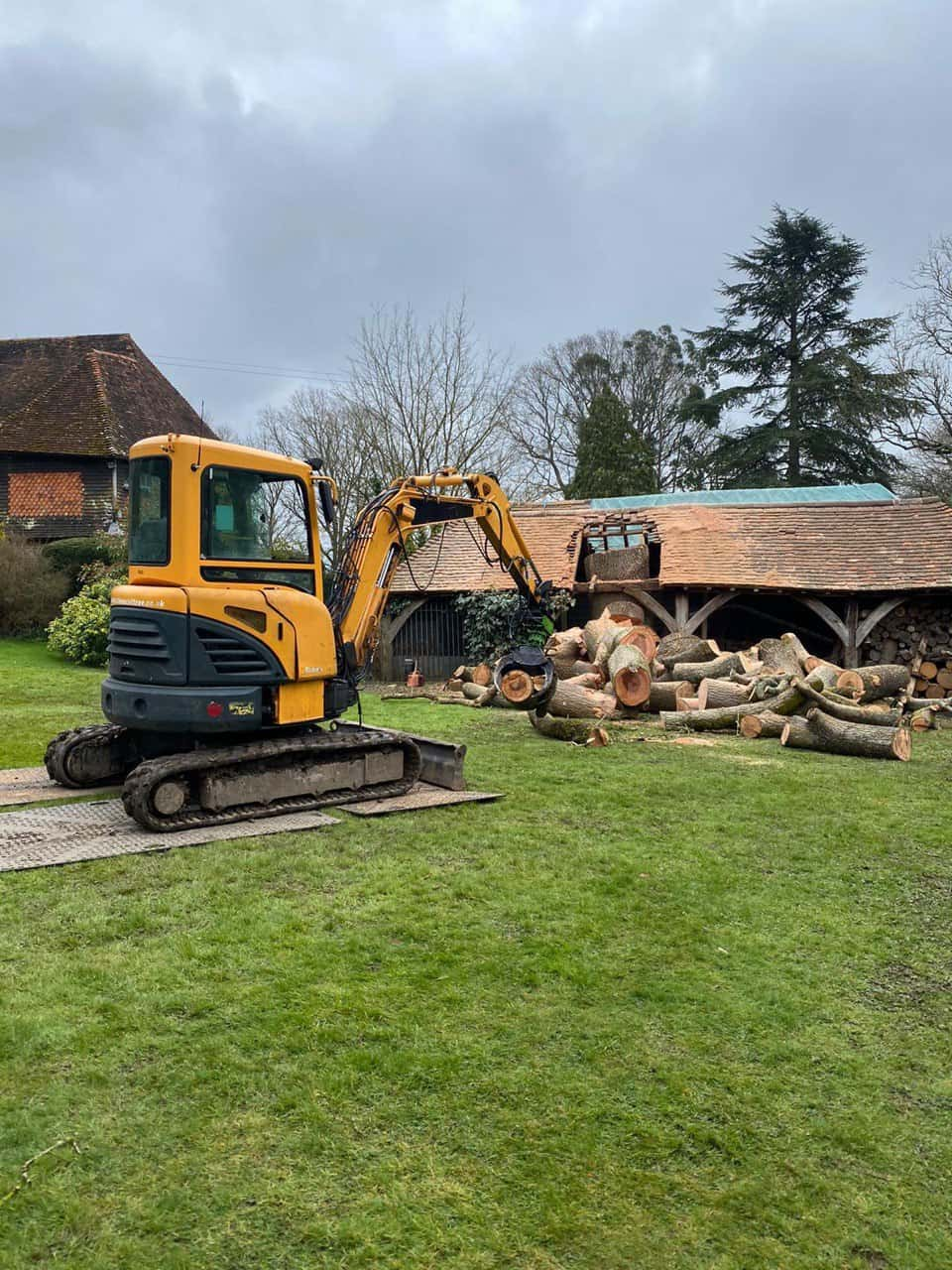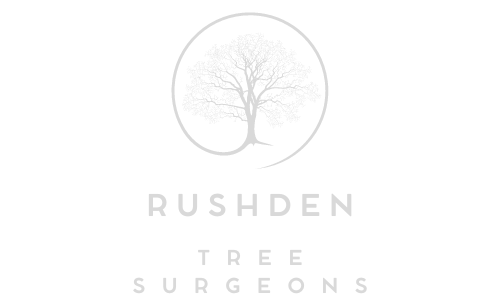The Signs of Tree Stress Every Homeowner Should Know
Healthy trees enhance the beauty, safety, and value of any property. They provide shade, shelter, and character, but like all living things, trees can suffer from stress. Tree stress occurs when environmental conditions, pests, or damage prevent a tree from thriving, leaving it vulnerable to disease or decline. At Rushden Tree Surgeons, we help homeowners in Rushden and across Northamptonshire recognise the early warning signs of stress before problems escalate into serious hazards.
Understanding Tree Stress
Tree stress is a response to factors that disrupt the balance between what the tree needs and what the environment provides. Whether it’s drought, soil compaction, or damage to the roots, stress affects a tree’s ability to absorb water and nutrients. The signs often develop slowly, meaning many homeowners overlook them until the damage becomes visible.
Recognising these signs early allows for timely intervention — preserving not only the tree’s health but also the safety and appearance of your property.
1. Wilting or Discoloured Leaves
One of the first signs of tree stress is a change in the foliage. Healthy leaves should be vibrant and full, but stressed trees often show:
- Yellowing leaves during the growing season, suggesting nutrient deficiency or root problems.
- Brown leaf edges that may indicate drought stress or salt exposure.
- Wilting or curling leaves, showing the tree is struggling to retain water.
- Premature leaf drop, where the tree sheds leaves early to conserve resources.
If you notice these changes in spring or summer, it’s a clear sign that your tree is under strain.
2. Sparse or Uneven Canopy Growth
A thinning canopy or patchy leaf coverage is a strong indicator that the tree isn’t getting enough nutrients or water. Branches may begin to die back, starting from the tips and progressing inward. This dieback often appears subtle at first, but it’s a warning that the tree’s internal systems are weakening.
At Rushden Tree Surgeons, we often find that uneven canopy growth is linked to root damage or compacted soil — both of which restrict oxygen flow and water absorption.
3. Cracks in the Bark or Trunk
The bark acts as a protective layer for the tree, shielding it from pests, temperature fluctuations, and disease. When a tree is under stress, the bark may begin to split or peel away. These cracks can expose the inner wood, creating entry points for fungi and insects.
Repeated cracking or oozing sap are signs that the tree’s defences are failing. While small fissures can occur naturally as a tree grows, deep or widespread splits should be inspected promptly by professionals such as Rushden Tree Surgeons.
4. Fungal Growth Around the Base
Fungi are often a symptom of internal decay. The presence of mushrooms or fungal brackets at the base of the tree indicates that the wood beneath the surface may be rotting. This decay compromises the tree’s stability and can eventually lead to structural failure.
While not all fungi are harmful, identifying the type and location is crucial. Early detection allows targeted treatment or removal before the damage spreads too far.
5. Dead or Falling Branches
Branches that frequently snap or show no signs of new growth can suggest that the tree is redirecting energy away from those areas to stay alive. This self-pruning process, known as “dieback,” is a serious sign of advanced stress.
Dead branches are not only unsightly but also dangerous. They can fall without warning, especially during high winds or storms. Regular pruning by Rushden Tree Surgeons ensures that these weak limbs are safely removed before they pose a risk.
6. Root Damage and Soil Compaction
A tree’s root system is its lifeline. When the roots are damaged by construction, vehicle traffic, or excessive paving, the tree’s ability to absorb nutrients is drastically reduced. Compacted soil around the base prevents water from penetrating deep enough to nourish the roots.
Signs of root-related stress include:
- Slow overall growth.
- Sparse foliage despite adequate rainfall.
- Exposed roots or soil erosion.
- Leaning or instability in the trunk.
If the ground around your tree has been recently disturbed, it’s important to have it assessed before permanent damage occurs.
7. Insect Infestations
Pests are often opportunistic and tend to attack trees already weakened by stress. You may notice boreholes in the bark, sawdust-like frass, or sticky residue known as honeydew from sap-sucking insects such as aphids.
While occasional insects are normal, a sudden increase in activity can indicate deeper health problems. Rushden Tree Surgeons can identify the pest type and recommend measures to control the infestation while improving the tree’s resilience.
8. Abnormal Growths or Galls
Abnormal swellings or galls on branches and leaves can signal infection or a pest infestation. While some are harmless, others can interfere with nutrient flow or indicate internal decay. Regular inspection helps determine whether these growths are benign or require treatment.
Preventing Tree Stress Through Proper Care
The best way to manage tree stress is to prevent it from occurring in the first place. Consistent maintenance ensures that trees remain strong and resistant to external pressures.
Key preventative steps include:
- Regular pruning: Removes deadwood and improves airflow.
- Mulching: Retains soil moisture and moderates temperature changes.
- Proper watering: Especially during prolonged dry periods.
- Soil care: Avoid compaction and maintain good drainage.
- Professional inspection: Early detection of disease or pest activity.
At Rushden Tree Surgeons, we offer comprehensive maintenance and health assessments tailored to local conditions in Rushden and across Northamptonshire.
How Professional Tree Surgeons Help Identify and Treat Stress
Diagnosing tree stress requires expertise. Some symptoms mimic seasonal changes or natural ageing, while others point to serious underlying issues. Professional tree surgeons can accurately identify the cause of the stress and implement corrective action, whether through pruning, soil improvement, or controlled removal.
Rushden Tree Surgeons uses specialist techniques to restore balance to trees suffering from environmental or biological stress. Our team ensures that any intervention supports both the tree’s long-term health and the safety of the surrounding property.
Conclusion
Tree stress is a problem that should never be ignored. The sooner it’s identified, the greater the chance of restoring the tree’s strength and stability. By recognising signs such as thinning canopies, discoloured leaves, or fungal growth, homeowners can act before irreversible damage occurs.
For expert diagnosis, maintenance, and care, Rushden Tree Surgeons provides professional tree services across Rushden and Northamptonshire. Our aim is to help every homeowner maintain strong, healthy, and beautiful trees that continue to enhance their property for years to come.
Call us on: 01933 422 068
Click here to find out more about Rushden Tree Surgeons
Click here to complete our contact form and see how we can help with your tree needs.

